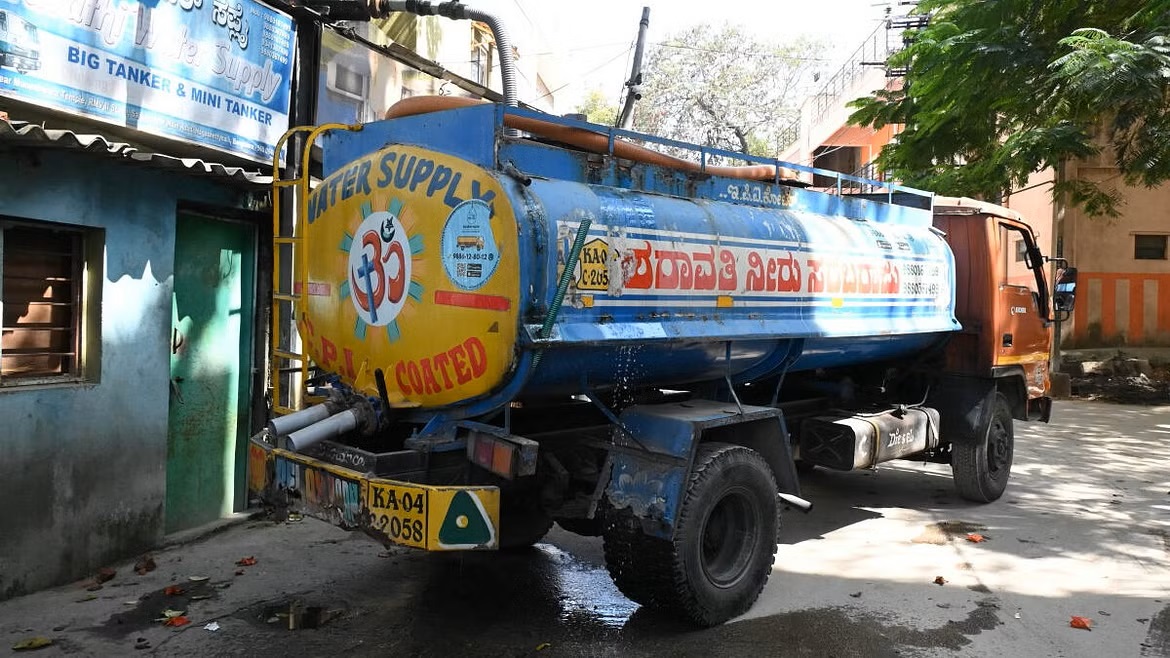As the El Nino intensifed in the second half of 2023, the south-west monsoons failed after July. Bengaluru was left facing a drought-like situation in the summer of 2024, with little respite from the Cauvery.
Our survey, conducted just before the summer of 2024 showed that the city was already reeling in water shortages. Many apartment complexes were dealing with water distress, with the BWSSB supply shrinking where available and rates of private water tankers going through the roof in most areas.
Our analysis was covered by the media, and led to the Government clamping down and capping the prices for water tankers.
The end of El Nino by the first half of 2024 ensured that the rains were normal during the year. The reservoirs on the Cauvery filled up, Bengaluru got more than its average rainfall.
OpenCity in collaboration with Bangalore Apartments Federation (BAF) conducted another survey during the summer of 2025 to gauge whether the normal rainfall had improved the water situation in 2025.
Relief for most people
Just over 50% of the apartment complexes surveyed reported that the water situation had improved compared to the previous year. A third did not notice any change, and 13.4% of those who responded noted that the situation had gotten worse.
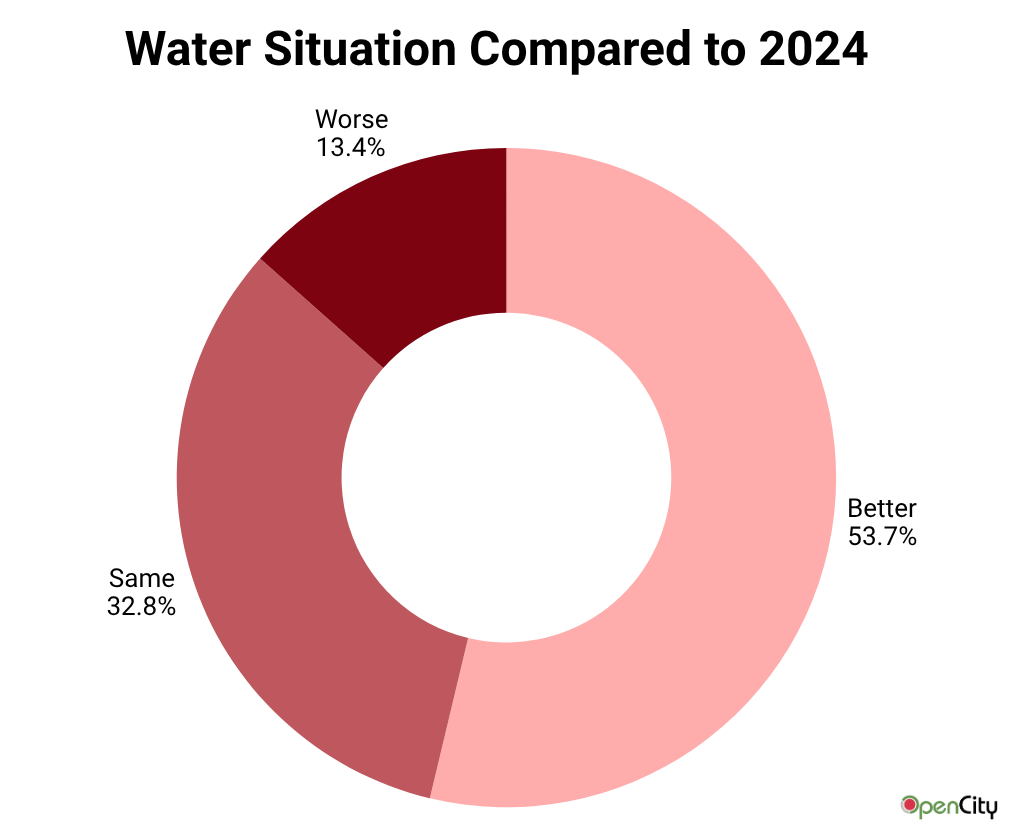
For those with BWSSB connections it was a mixed bag. While 35% reported that the water supply had increased, the proportion of those who noted no change or a reduced supply was only marginally behind.
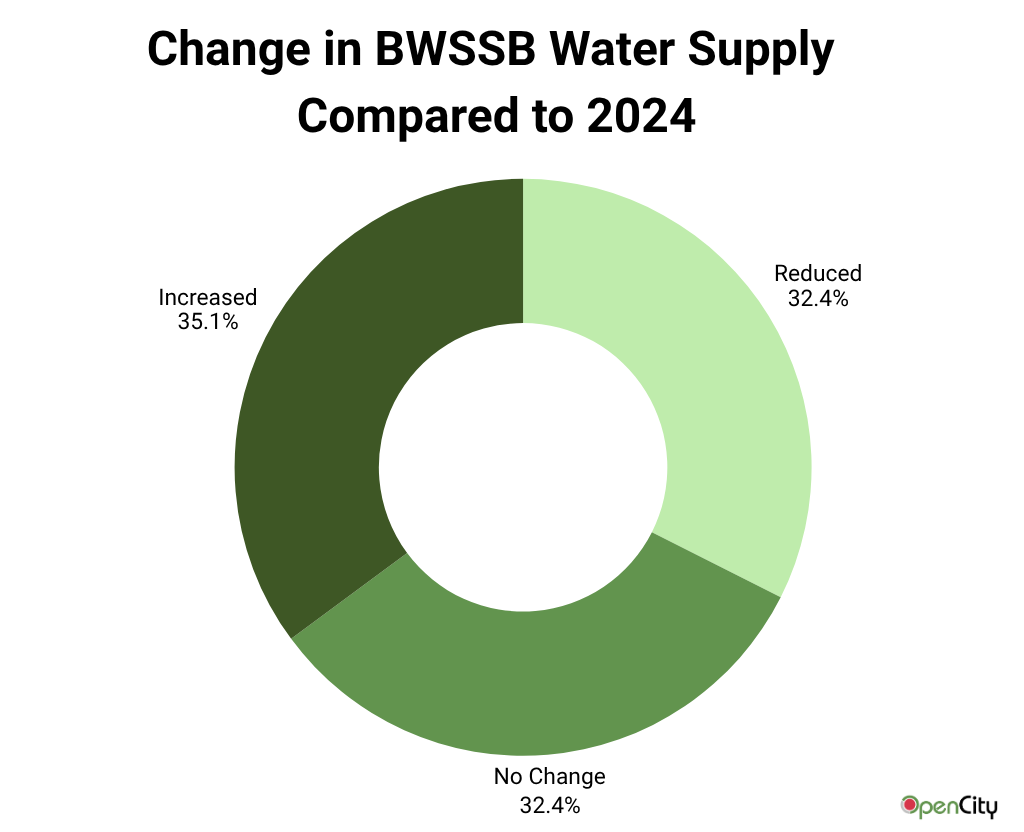
Cauvery Stage V reaches some areas
The Stage V of Cauvery Water supply was launched in October 2024. It brought many areas in the outskirts of the city into the water supply system of BWSSB.
Respondents from areas around Kanakapura Road and Hosur Road, parts of Bellandur and Whitefield, and some parts in the North-east of Bengaluru reported that the Stage V had covered their areas and they were receiving water from BWSSB.
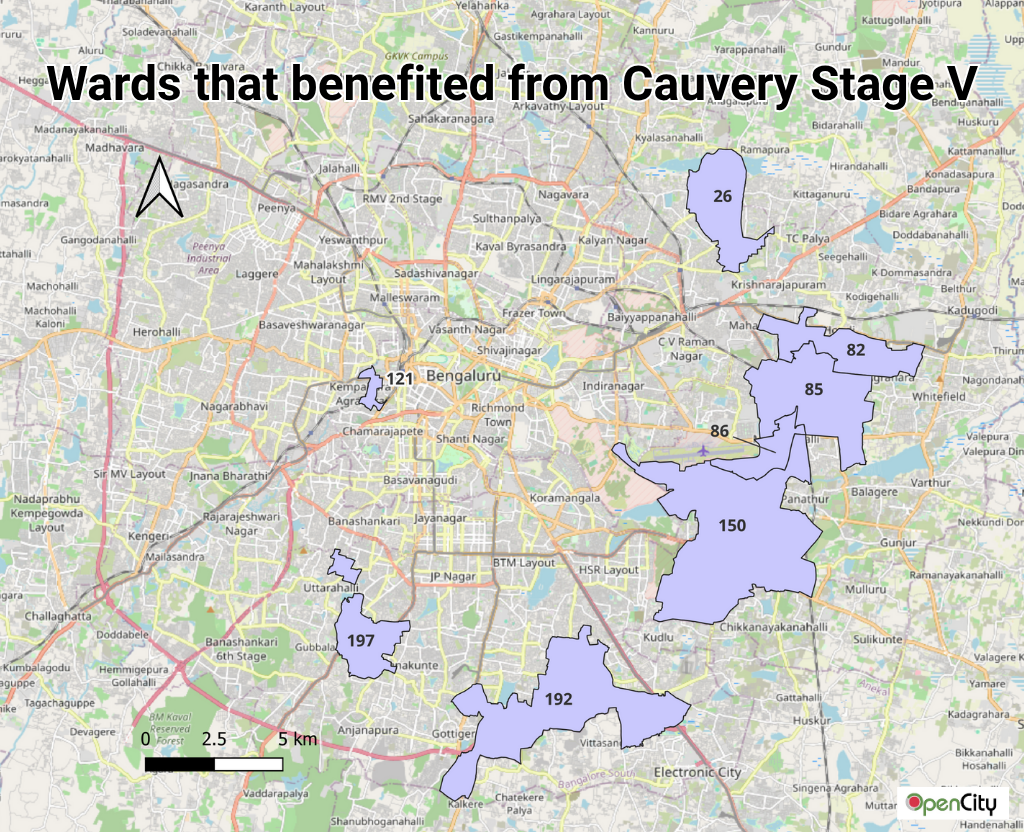
However, apartment complexes in many areas from the Southwest of the city to large parts between Hosur Road and Sarjapura Road, all the way to Varthur and its surroundings, parts of North-east and North like Horamavu, Jakkur and Vidyaranyapura continue to be without Stage V connection.
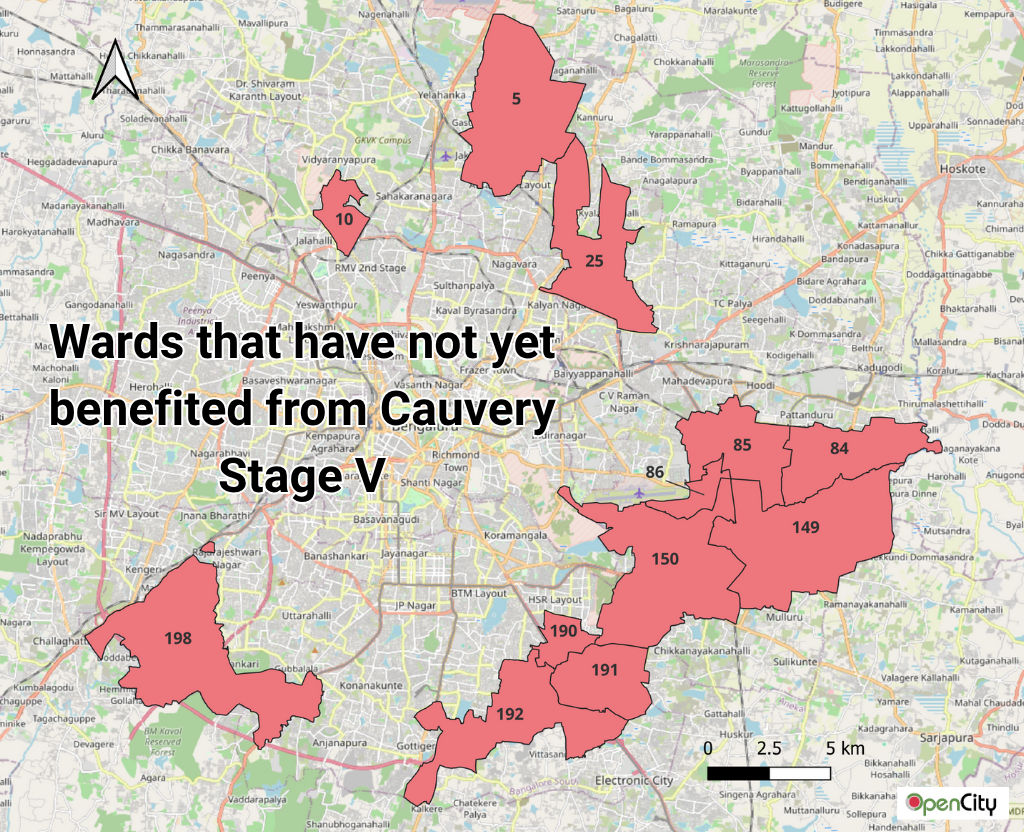
Note that some wards, like Bellandur feature in both maps. This is because while some parts of the ward have been covered by Stage V, other parts have not.
Private water tankers continue to rule
In most of these areas private water tankers continue to rule. Many apartment complexes rely on a daily supply of tanker water, and where their borewells aren’t dry, they still depend on them at a weekly level or for emergencies.
The water tanker rates vary by frequency of buying with daily buyers getting the best rates, while those needing for emergencies forced to shell out almost double the daily rates.
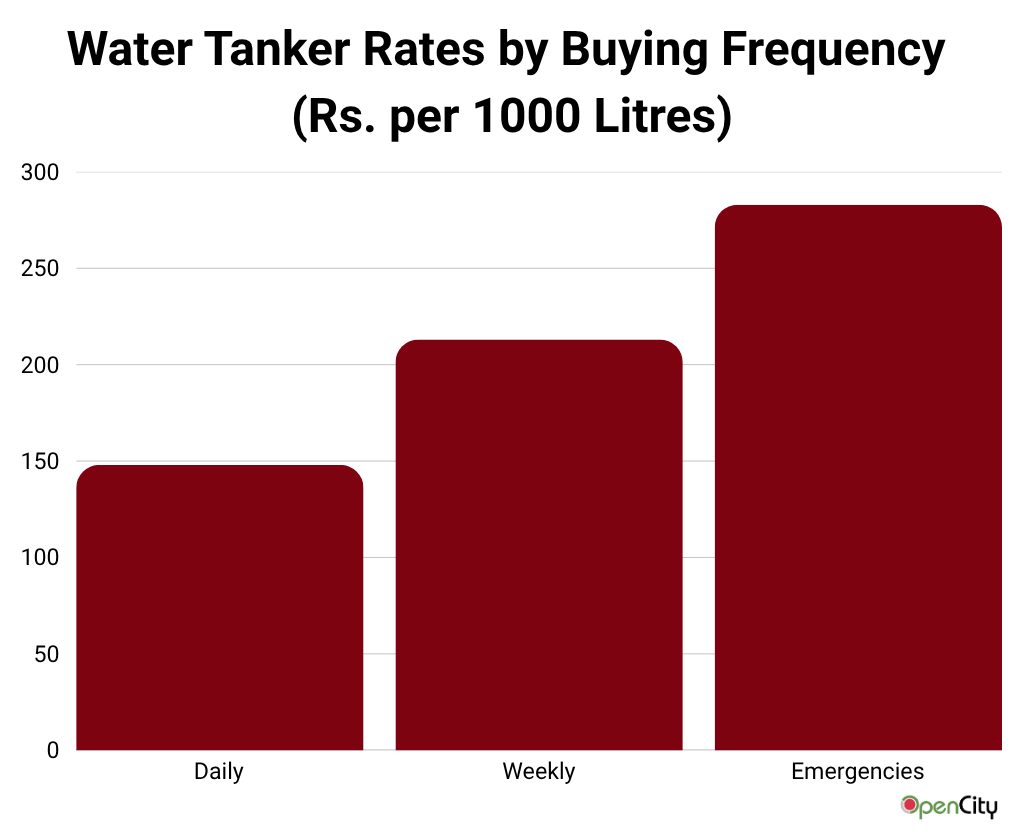
In terms of areas, areas in the East of the city, around Whitefield pay the highest per kilo-litre and the rates reduce as you go South along the Outer ring road. Places around Electronic City and Kanakapura road pay the lowest per Kilo-litre for tankers, similar to those in the north of the city.
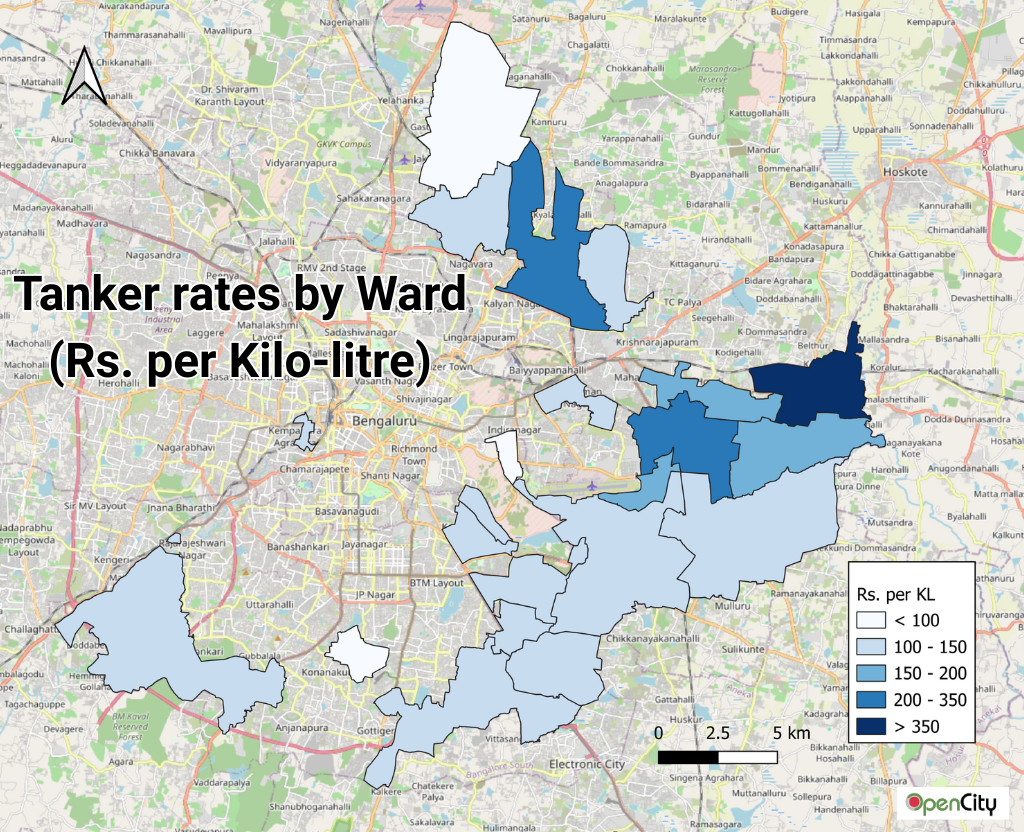
Conclusions
In summary, most people noted that the water supply situation in Bengaluru in 2025 was better than in 2024. Normal rainfall had improved the groundwater situation and raised the levels in the reservoirs of the Cauvery. The launch of Cauvery Stage V also benefited many areas.
However, challenges remain where many areas continue to be dependent upon private tankers. Private tankers also continue to dictate the rules, with rates varying widely in different parts of the city. While the rates were capped during the crisis, there seems to be little monitoring since then.
Better water supply coverage, mandating rainwater harvesting, usage of treated waste water for construction and other non-drinking purposes can help relieve the stress on water supply in the city and also make the system more sustainable.

